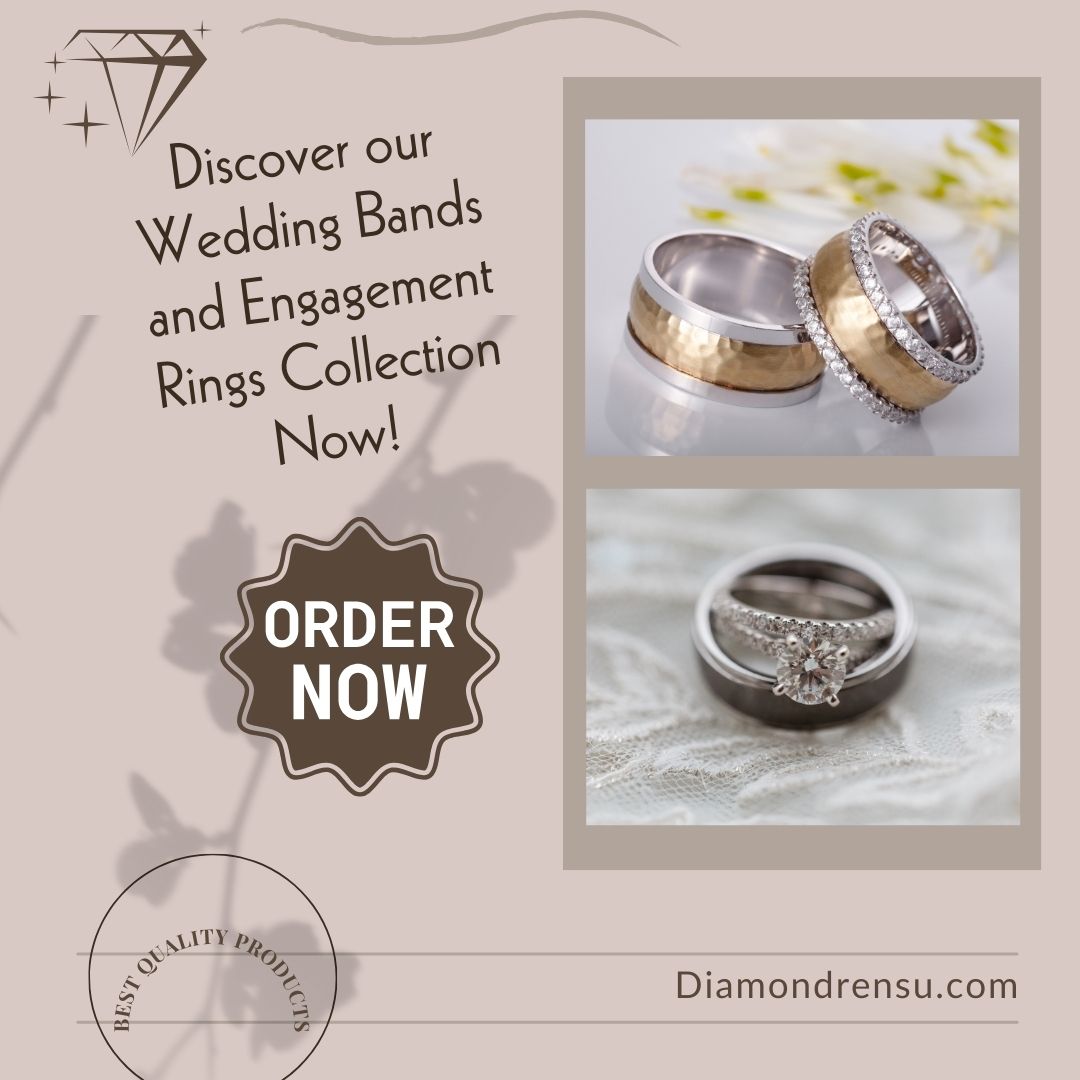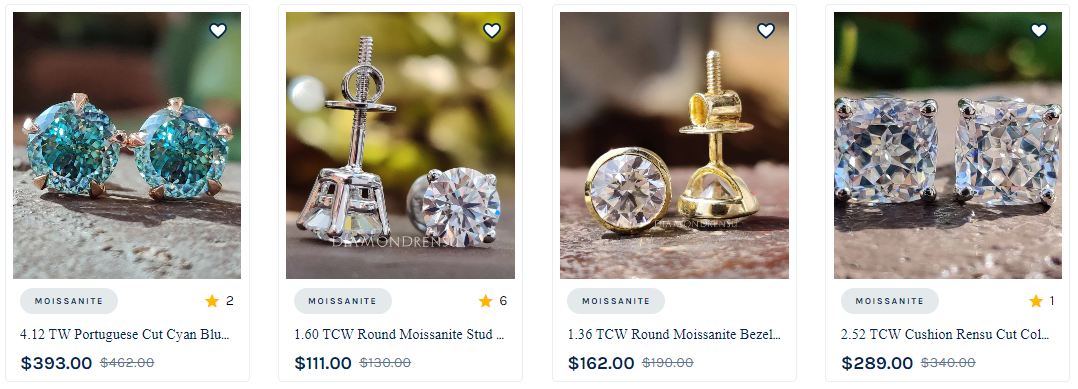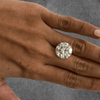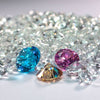
Diamond Visual Size: Maximizing Perceived Carat Weight
When considering the purchase of a diamond, many shoppers prioritize carat weight. However, carat weight alone can be misleading. This is because it simply represents the weight of the diamond and not necessarily its apparent size when viewed from above.
The visual size, or how big a diamond appears to the eye, is an aspect that can dramatically affect the diamond's appeal and perceived value.
To understand visual size, I consider the measurements of the diamond's table, or the top surface visible when the stone is set in a ring. The dimensions of the table, which include the length and width, are critical in assessing how large a diamond looks.
Additionally, the diamond’s cut and shape contribute to its visual size. For example, elongated shapes like oval or marquise cuts often appear larger than round diamonds of the same carat weight due to their larger table area.
Understanding Diamond Basics
When discussing diamonds, their allure is not just in the sparkle, but also in their perceived size. I'll guide you through how carat weight and diamond shape affect a diamond's physical size and appearance.
Carat Weight and Physical Size
Carat is a unit of weight for diamonds, where one carat equals 200 milligrams. While many associate carat weight directly with size, it's important to remember that carat weight is not a direct measure of a diamond's physical dimensions.
For instance, a 1-carat diamond may appear visually larger or smaller depending on its cut proportions and shape. Table and depth percentages, girdle thickness, and cut quality all influence how large a diamond appears when viewed from above.
Shapes and Appearance
Different shapes of diamonds can make a dramatic difference in their appearance:
- Round diamonds are symmetrical and tend to look proportionate to their carat weight.
- Oval diamonds might appear larger than a round diamond of the same carat weight due to their elongated shape.
- Shapes like the marquise, pear, and emerald have distinct aspect ratios that can also influence their face-up size.
Exploring Diamond Shapes
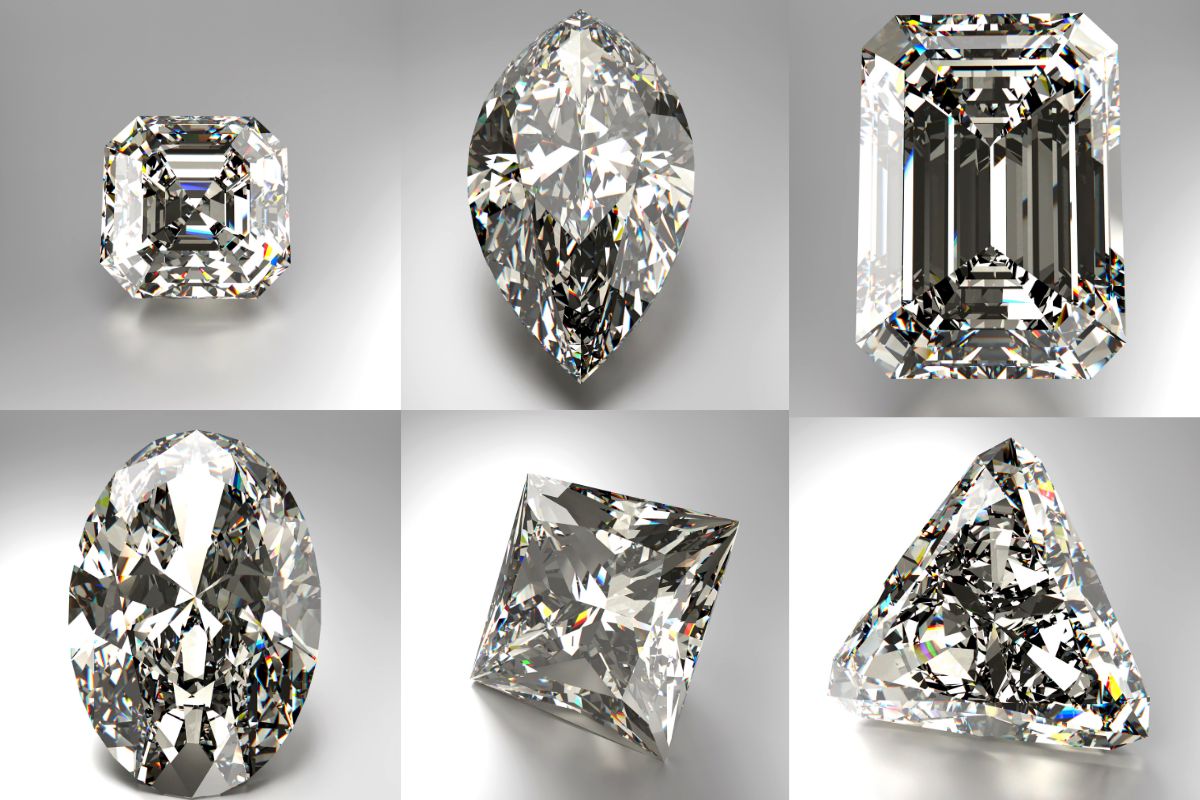
When selecting a diamond, the shape is a defining characteristic that influences both aesthetics and perceived size. Let me guide you through the nuances of the most popular diamond shapes, mainly focusing on the Round Brilliant and various Fancy Shapes.
Round Brilliant
The Round Brilliant cut is the archetype of diamond cuts and renowned for its unrivaled brilliance and classic appearance. It has 58 facets that reflect light, producing the greatest sparkle of all diamond shapes.
I find that because of its symmetry, the Round Brilliant cut often appears smaller when compared to elongated fancy shapes of the same carat weight.
Fancy Shapes
Under the umbrella of Fancy Shapes, each shape harbors distinct attributes:
-
Oval: This shape's elongated form gives it a larger surface area, which can create the illusion of greater size compared to round diamonds of the same carat weight. I've observed that Ovals tend to have a flattering effect on the hand, making it appear more slender.
-
Marquise: With its pointed ends and curved sides, the Marquise cut often appears larger than it actually is due to its long, narrow shape. This cut maximizes carat weight, giving you a larger-looking diamond for your budget.
-
Emerald: The Emerald cut is a rectangular shape with cut corners and broad, flat planes. While it may not have the same brilliance as a round diamond, its clarity showcases a hall-of-mirrors effect that is quite unique.
-
Asscher: Similar to the Emerald cut but in a square shape, the Asscher's stepped facets emphasize depth and draw one's gaze into the stone. It's beloved for its vintage appeal and sophistication.
-
Cushion: The Cushion cut combines a square cut with rounded corners, resembling a pillow shape. This cut varies in how rectangular or square it appears, which can influence how large the diamond looks.
-
Princess: The Princess cut is a square or rectangular diamond with pointed corners and typically contains either 50 or 58 facets, much like the Round Brilliant. It is second in popularity, offering a contemporary look while still achieving a high degree of sparkle.
-
Radiant: The Radiant cut is a versatile choice that combines the silhouette of an Emerald cut with the brilliance of a Round. It's a popular choice for those wanting a lively diamond without the traditional Round shape.
-
Heart: A niche shape, the Heart cut is essentially a pear-shaped diamond with a cleft at the top. The complexity of the cut can influence the diamond's brilliance, but it remains a symbolic and unique choice.
Diamond Size and Quality
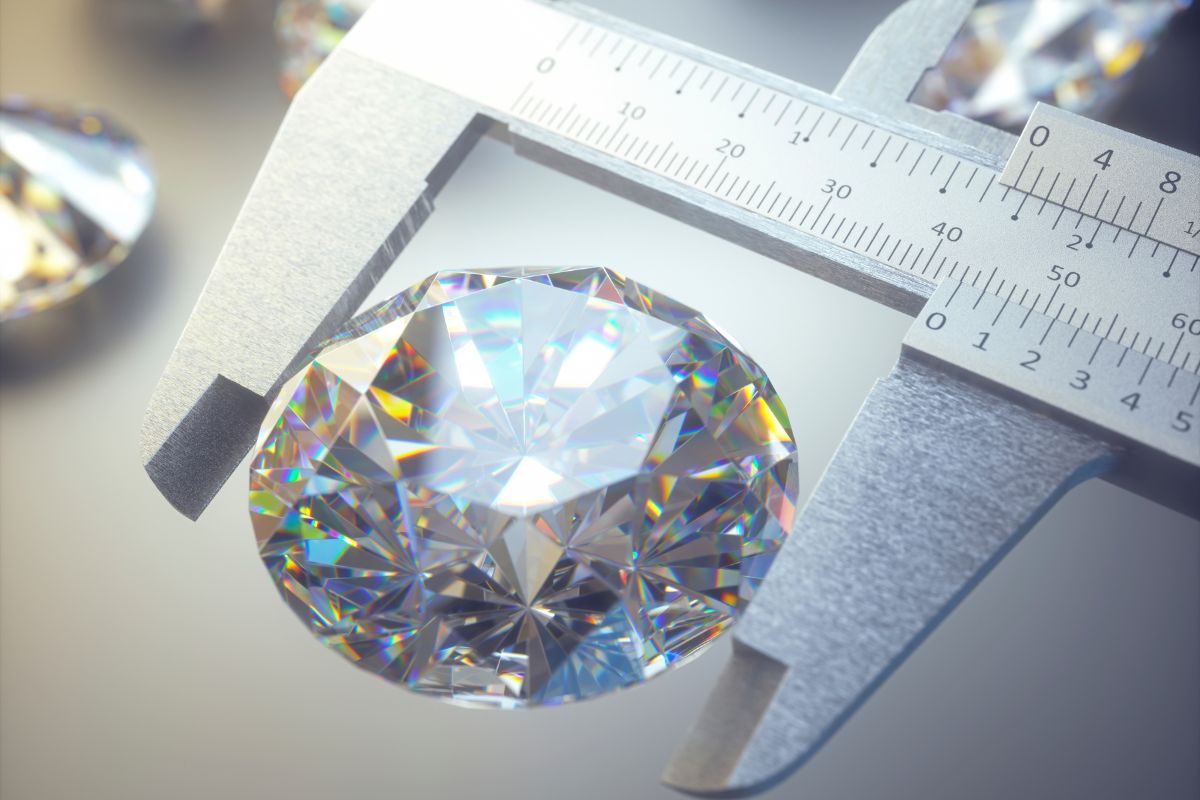
When discussing diamonds, size refers to the carat weight, while quality encompasses aspects like cut, color, and clarity. These elements profoundly influence a diamond's appearance.
Cut and Proportions
I appreciate that the cut of a diamond is paramount in determining its brilliance and overall visual impact. A diamond's cut grade is a measure of how well a diamond's facets interact with light.
- Proportions: Diamonds with ideal or excellent proportions maximize light return from the top of the stone. Depth is a critical component—neither too deep nor too shallow, which assures a larger appearance and optimum scintillation.
Color and Clarity
-
Color: A diamond's color grade influences its quality and price. I find that diamonds graded D (colorless) are rarer and more valuable, while diamonds with a slight yellow or brown tint (grade G to J) can appear colorless once set in a ring and are hence excellent choices for value-conscious buyers.
-
Clarity: Clarity refers to the absence of inclusions and blemishes. Grades range from Flawless (no inclusions visible under 10x magnification) to Included (inclusions visible with the naked eye). However, many inclusions and blemishes are microscopic and do not affect a diamond's beauty in any meaningful way.
Diamond Size Measurement
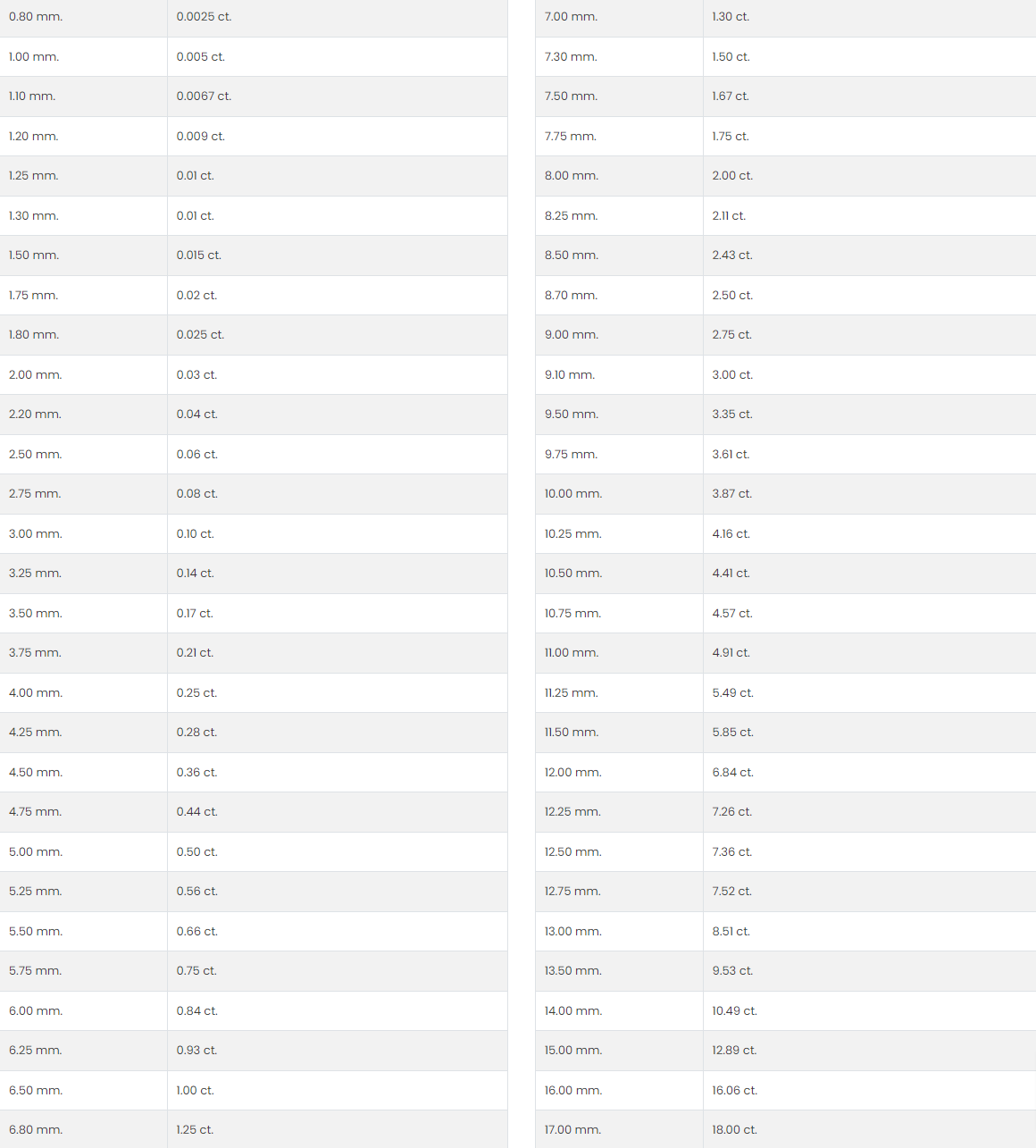
When discussing diamond size, people often refer to carat weight, but visual size is better assessed through precise measurements and understanding the diamond's cut, as this affects how large the stone appears.
Size Charts and Guides
My use of diamond size charts is essential in conveying a diamond's dimensions in millimeters (mm). These charts provide a straightforward way to associate visual size with carat weight.
- Round Cut Diamonds:
- 4 mm typically corresponds to 0.25 ct
- 5.0 mm corresponds to 0.50 ct
- 6.5 mm in diameter is usually 1 ct
To detail measurements across diamond shapes, I reference a table, which might look like this:
Impact of Cut on Size Perception
Understanding the cut of a diamond is crucial in assessing its visual size. The cut influences light performance and, consequently, diamond sparkle, which can affect perceptions of size.
For instance, consider these two factors:
- Cut Quality: A well-cut diamond reflects light more effectively, creating brilliant sparkle that can make the stone appear larger.
- Shape: Elongated shapes, such as the oval or marquise, tend to appear larger than round diamonds of equivalent carat weight due to their larger surface area.
Choosing the Right Diamond

When selecting a diamond, it's crucial to consider how its shape and setting contribute to its visual size.
Ensure the stone meets your expectations for an engagement ring or other jewelry.
Impact of Shape on Visual Size
Different diamond shapes can alter the perception of size in significant ways.
For example, marquise, oval, and pear-shaped diamonds often appear larger than round or square diamonds of the same carat weight because of their extended length.
In these shapes, the length-to-width ratio is key. The greater the length in proportion to the width, the larger the diamond will often appear.
It's important to prioritize optimal proportions that balance the shape's aesthetics and the stone's brilliance.
Considerations for Settings
The choice of setting can both complement and enhance a diamond's visual size.
A bezel setting, which encircles the stone with a thin metal rim, can make a diamond appear larger due to the added width around the perimeter.
However, some may feel that it can also obscure slight portions of the diamond's circumference.
On the other hand, I find prong settings to enhance visual size as they expose more of the diamond and allow for additional light to enter, which can make the diamond appear more radiant.
List of Settings and Their Impact on Visual Size
- Bezel: Adds a border; may increase perceived width
- Prong: Minimal interference; maximizes light entry, enhancing size and sparkle
Diamond Value and Pricing
| Carat Weight | Color Grade | Clarity Grade | Cut Grade | Average Price ($) |
|---|---|---|---|---|
| 0.50 | D | IF | Excellent | $5,000 |
| 1.00 | F | VVS1 | Very Good | $10,000 |
| 1.50 | G | VS2 | Good | $15,000 |
| 2.00 | H | SI1 | Fair | $20,000 |
| 2.50 | J | SI2 | Poor | $25,000 |
In assessing a diamond’s worth, I recognize that two of the most influential factors are the price per carat and how this relates to the overall budget allocated for a diamond purchase.
Price per Carat
Price per carat is the starting point of understanding a diamond's value. It is essentially the price of the diamond divided by its weight in carats.
For instance, if a 1 carat diamond is priced at $4,000, then the price per carat is $4,000.
The value per carat doesn't scale linearly with size. Rather, as diamonds increase in carat weight, the price per carat tends to rise due to the rarity of larger diamonds.
- Example Calculation:
- Total price of diamond: $4,000
- Carat weight: 1 carat
- Price per carat: $4,000 / 1 = $4,000 per carat
Budgeting for a Diamond
My budget consideration is crucial when planning for a diamond purchase.
It's important to set a clear budget first, which helps in making informed decisions on diamond carat size and quality within that price range.
When budgeting for a diamond, I factor in the carat weight that I can reasonably afford while not compromising on other quality attributes like cut, color, and clarity.
- Budget Tips:
- Determine the maximum price I'm willing to pay.
- Decide on the carat size that fits within my budget.
- Opt for a slightly under whole or half carat size (e.g., 0.9 instead of 1 carat) for potential savings without significant impact on visual size.
Diamonds in Jewelry
When selecting diamonds for jewelry, the visual size and shape of the stone are paramount to its aesthetic and how it complements my personal style.
Engagement Rings and Bands
For engagement rings, the diamond's cut, carat, and clarity contribute significantly to its prominence and visual appeal on the hand.
In particular, round and princess cuts are prevalent due to their ability to maximize sparkle.
A diamond's carat weight is often mistaken as its size, but it actually measures weight.
I consider the cut and table surface area for true visual size.
For example, a 1-carat round diamond generally has a 6.5 mm diameter, making it a substantial choice for an engagement ring that catches the eye without overwhelming the finger.
Earrings and Necklaces
Diamond earrings and necklaces vary greatly in style, with visual size influenced by diamond weight and setting.
Stud earrings may use smaller diamonds, around 0.25 to 0.5 carats, which are delicate yet still offer sparkle.
For necklaces, pendants can range from understated solitaires to intricate designs with multiple stones.
Diamond Size in Jewelry: Quick Reference
-
Engagement Rings:
- Round Cut: Approx. 6.5mm diameter for 1 carat
- Princess Cut: Slightly smaller table area than round
-
Earrings:
- Studs: Typically 0.25-0.5 carats, 4mm-5mm diameter
- Drops/Hoops: May use larger stones for more impact
-
Necklaces:
- Pendants: Size varies widely based on design, can be as small as studs or larger for statement pieces
Buying Diamonds

When I purchase diamonds, my focus is on quality and trust. These two pillars are foundational for securing a valuable and beautiful stone.
Choosing a Jeweler or Designer
I ensure that the jeweler has a strong reputation and credentials.
It’s vital that they have a transparent process and a wide selection of loose diamonds to choose from.
I look out for those who are members of recognized industry organizations, as this often reflects a commitment to ethical standards.
For instance, if I opt for online retailers like James Allen, I examine customer reviews and their service offerings, especially in crafting custom engagement rings.
Understanding Diamond Certification
For me, the certification of a diamond is a non-negotiable aspect. This document tells me about the stone's authenticity and quality.
The Gemological Institute of America (GIA) is one of the most respected organizations for diamond grading.
A GIA certification encompasses a detailed analysis performed by expert gemologists.
Here's a brief overview of what I look for in a GIA certificate:
I rely on these certifications to guide me in comparing loose diamonds for an engagement ring, ensuring I'm making an informed choice based on quality indicators.
Customization and Style
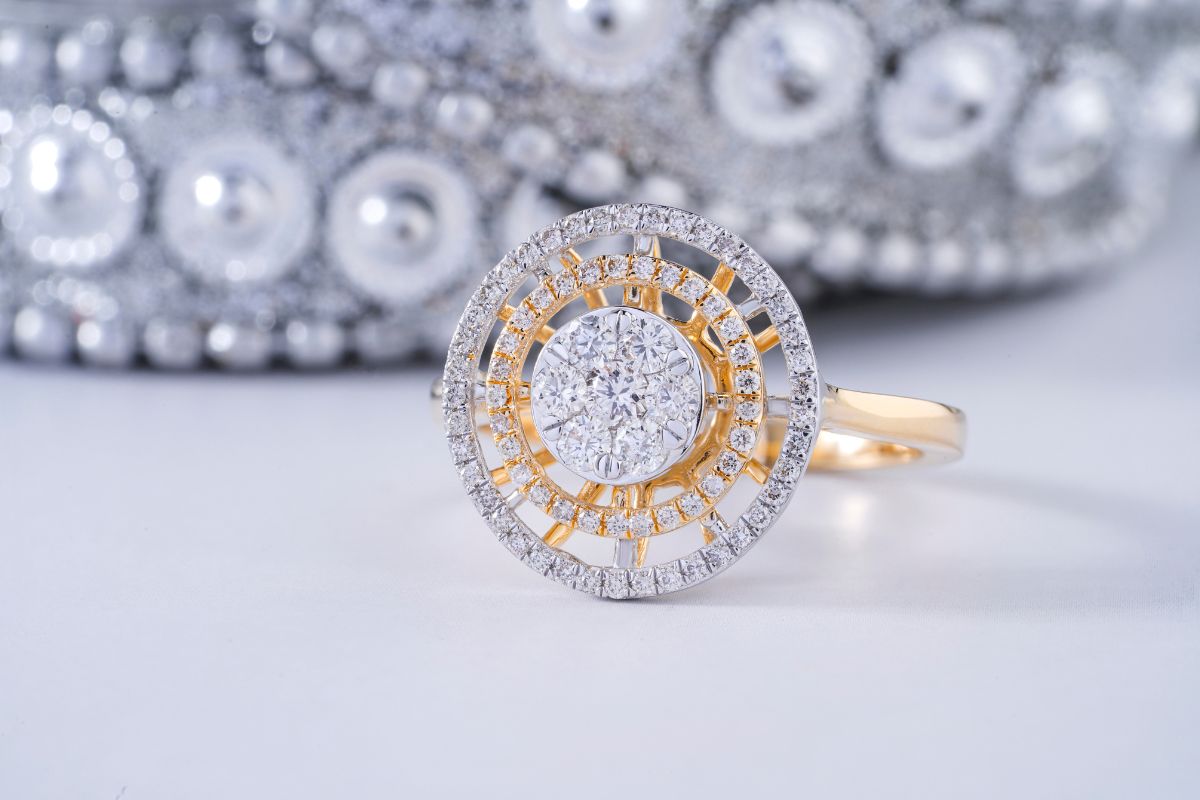
When I consider diamond ring customization, I reflect on how the right setting choice can accentuate a diamond's size while also reflecting personal style.
Personalized Settings
Choosing a personalized setting for a diamond can dramatically influence the visual impact of the stone.
I know that a halo setting — where smaller diamonds encircle the main stone — can make a center diamond appear larger.
Different cuts like cushion, princess, and oval cuts offer unique appeals.
The cushion cut, with its rounded corners, offers a soft appearance, while the angular nature of a princess cut exudes a modern feel.
An oval cut, with its elongated shape, can lend a greater surface area, making the diamond appear more prominent.
Balancing Size and Style
In achieving a balance between size and style, I understand the importance of considering both the polish and symmetry of a diamond. These factors can affect its sparkle and make it appear larger.
An emerald cut showcases sophistication with its clean lines, but its larger flat surface can make inclusions more visible. This requires a higher clarity. The Asscher cut is designed to draw the eye inward but also benefits from higher clarity.
Here's a quick reference to consider:
- Cushion Cut: Soft edges, classic appeal
- Princess Cut: Sharp angles, contemporary flavor
- Radiant Cut: Vibrant brilliance, versatile for settings
- Emerald Cut: Elegant, requires high clarity due to its open table
- Asscher Cut: Unique, also demands high clarity
- Oval Cut: Elongated, creates an illusion of size
My focus always remains on how these cuts and settings align with personal style. This ensures that the chosen diamond ring mirrors individuality alongside these characteristics.
Also Read
Frequently Asked Questions
Evaluating the visual size of diamonds is crucial as it determines their appearance on the piece of jewelry. The questions below address common inquiries about the visual size of diamonds.
How can I compare the visual size of diamonds?
I compare the visual size of two diamonds by measuring their surface area, which includes length and width, and considering their depth percentage. A diamond with larger length and width dimensions will often appear bigger visually.
What is the typical visual size of a 1 carat diamond?
Typically, a 1 carat round diamond has an average diameter of about 6.5mm. However, this can vary slightly due to the diamond's cut and proportions.
How does carat weight correlate with a diamond's visual size?
Carat weight is loosely related to visual size, but it's not a direct measure. This is because it refers to the weight of the diamond, not how large it appears. Two diamonds can be the same carat weight but appear different in size based on their cut and proportions.
Can you measure the visual size of a diamond in inches?
Yes, I can measure the dimensions of a diamond in inches or millimeters. These measurements provide a good indication of the diamond's visual size when set in a mounting.
Which diamond size tends to look the most proportionate?
The most proportionate diamond size depends on the setting and the wearer's hand. However, a well-cut diamond with a balanced length-to-width ratio generally appears more proportionate.
What does 'visual CTW' mean in relation to diamond size?
'Visual CTW' stands for 'visual carat total weight.' It's an approximation of how sizeable a diamond appears on the finger compared to the actual carat weight.
A higher visual CTW suggests a diamond looks larger than its actual carat weight would indicate.
Checkout some of our top collections:
Leave a comment
Please note, comments must be approved before they are published.

